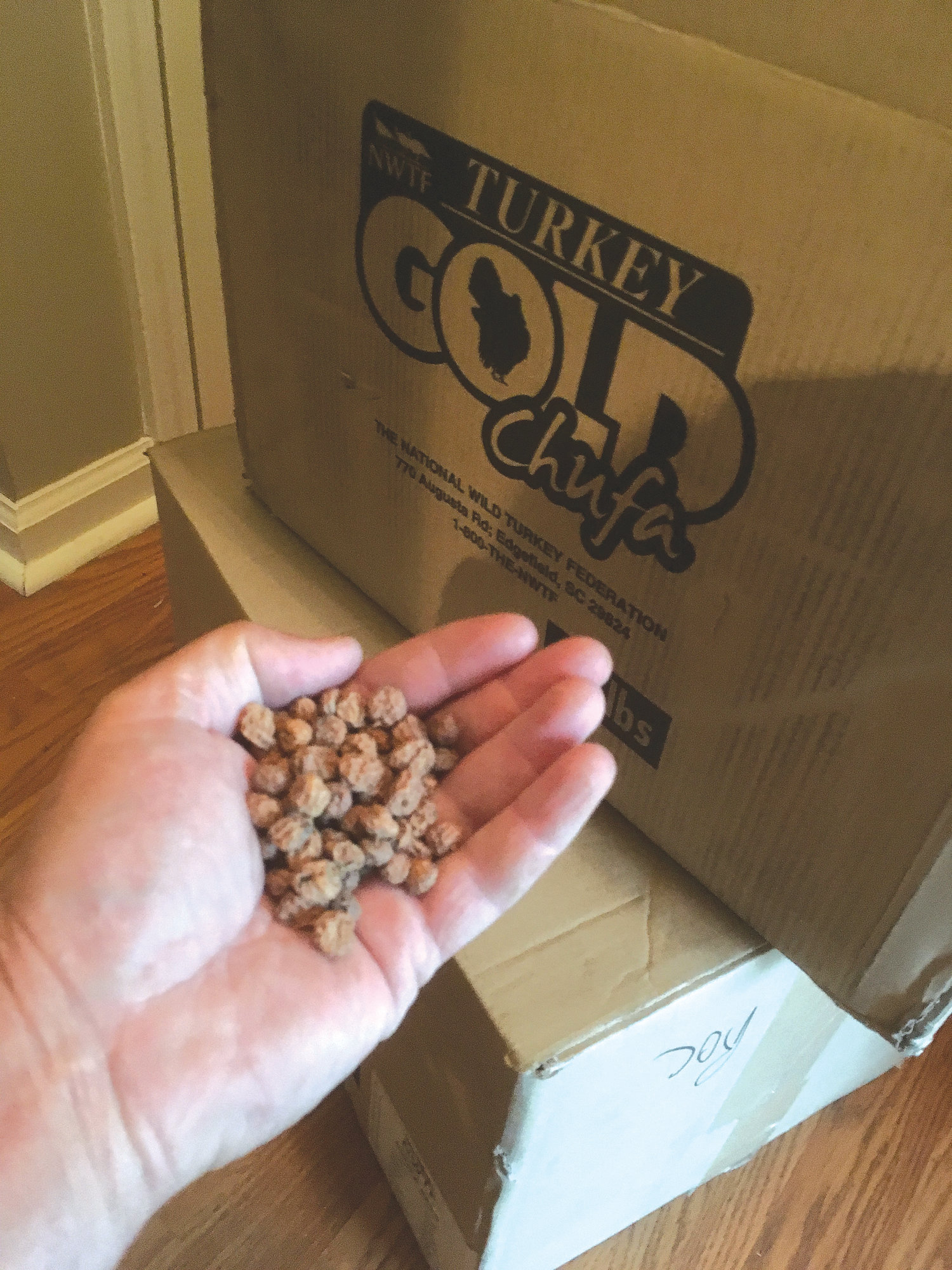A chink in the armor

There are two boxes stacked in the floor of my foyer. Each box has two vacuum-packed, square bags of chufa nuts that weigh 25 pounds each. The boxes were delivered to my front porch one afternoon, toward the end of May.
The boxes were heavy, and I set them just inside the front door until I could decide where to put them. My wife, Ginger, asked me what was in the boxes, and when I told her, she said they could just stay right there. So, I left them in the foyer. I need to plant them, but I'm waiting on the rain.
I ordered the chufa from the National Wild Turkey Federation's Seed Subsidy Program. Being a member of the NWTF qualifies me to get the seed at a discount price. The NWTF imports the nuts from Spain.
The chufa plant is a sedge, native to the Old World. Its tubers or nuts grow underground on the fibrous roots of the plant. It is a warm-season perennial plant, and its foliage looks much like our native nutgrass.
Chufa is not aggressive and will not cause problems for other plants grown after it.
It is easy to grow and needs about 100 days to produce a crop. Seed can be broadcast at about 50 pounds per acre. It can also be planted in rows with a corn or peanut plate. New land provides the best results, as weeds and disease may not yet be a problem. Chufa must be rotated every two or three years.
The tubers, or nuts, are an excellent winter food source for wild turkeys. Turkeys are natural scratchers and love chufa. They will return to a plot again and again all winter long, until the spring greenup. A chufa patch that is being used regularly by wild turkeys will be scratched up extensively, with small oval-shaped craters and fresh dirt turned up constantly.
A quarter-acre plot is about the smallest size that I plant. By the end of the winter, the plot will be thoroughly scratched up, and any reasonable person would conclude that all the nuts are gone, but the plot can be plowed in the late spring or early summer, and a new crop of chufas will sprout.
Chufas need full sun, or as much sun as possible, to thrive. Do not plant too thickly or with any other crop, as they cannot stand the competition. Sandy land makes it easier for the turkeys to scratch up the tubers, but chufa will grow in almost any type of soil.
To plant the seed, I step off an area to be planted and figure the acreage. I'll estimate the poundage and pour the seed into a 5-gallon bucket. I'll walk along the plowed seed bed and hand broadcast the seed with a constant, deliberate sweep across the ground to my front. After the seed is spread, the plot is plowed lightly to cover the seed one to two inches deep. Now, all we need is rain.
May and June is the best time to plant chufa. As the plants mature, the tops will turn golden brown. If you think the turkeys might need some help finding the plants, you can pull some up in the fall for the turkeys to find.
Planting chufa is definitely an effective management tool to attract and hold turkeys on your property. It is a highly nutritious food and is available in the fall, winter and into the spring when they need it the most. It will help hens, especially, go into the breeding and nesting season in a healthy state.
A well-used chufa patch will cause turkeys to change their home range, roosting locations and daily habits. It is the one chink in their armor.
Reach Dan Geddings at cdgeddings@gmail.com.
More Articles to Read
